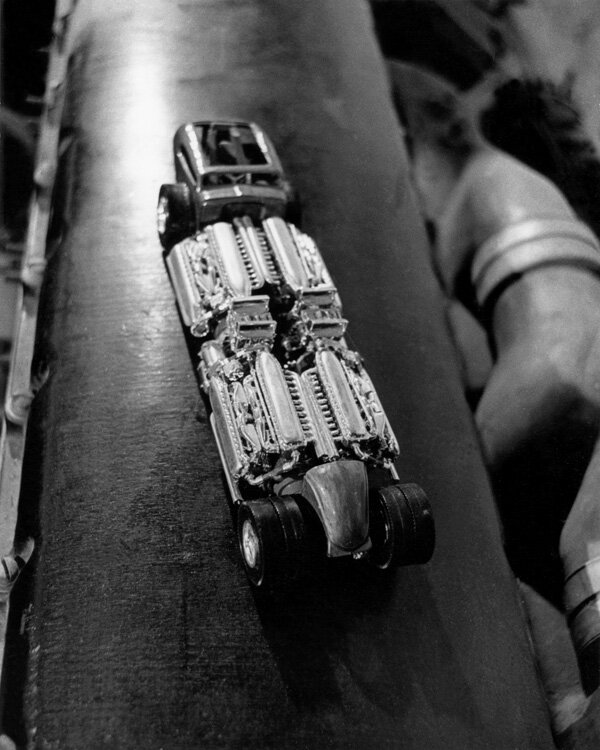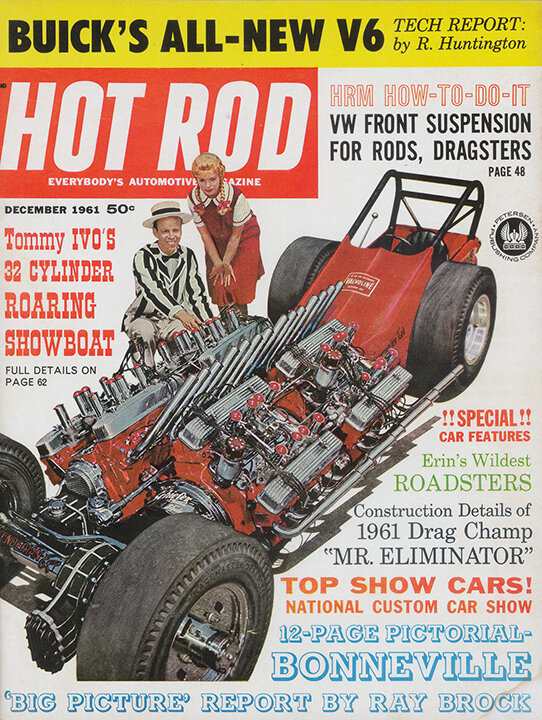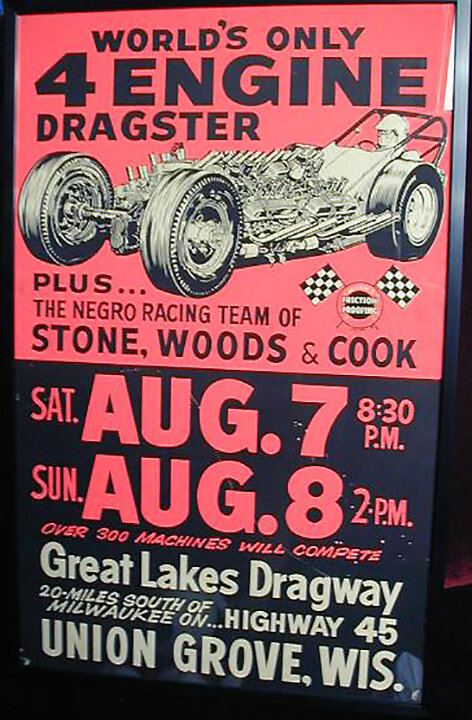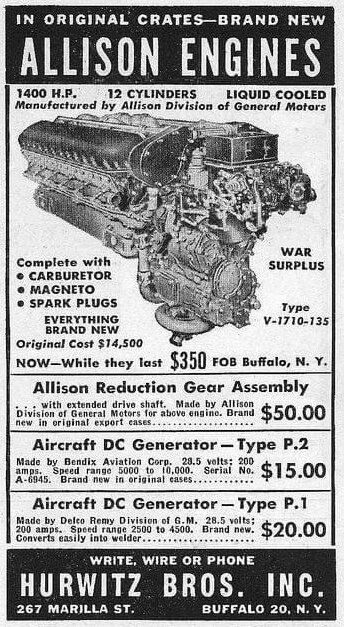Four-Engine Dragsters: ‘Showboat’, ‘Wagon Master’, ‘Mach IV’ & ‘Quad Al’
November 2020 • By Dave Wallace • Photos Bob McClurg, Lou Hart, 'TV' Tommy Ivo collection, Steve Reyes, Tim Sutton, Tony Thacker & Dave Wallace
Presented by RatTrapRacing.com & USAutomotive.com‘TV’ Tommy Ivo’s ‘Showboat’ with an aluminum Buick wagon body became the ‘Wagon Master.’ Photo Steve Reyes
Mickey Thompson's 1988 obituaries duly document enough innovations and achievements for a dozen successful men, let alone a single career cut cruelly short by two killers who forced the wounded husband to watch Trudy Thompson's execution before finishing him off. He was the first famous hot rodder, and maybe the greatest ever.
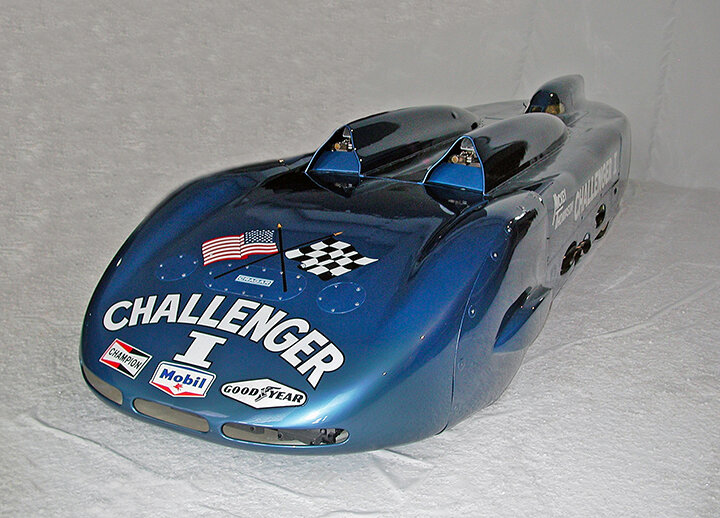
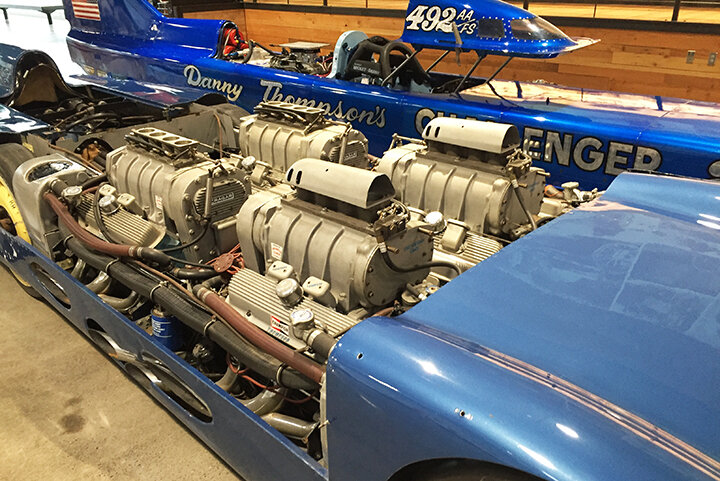
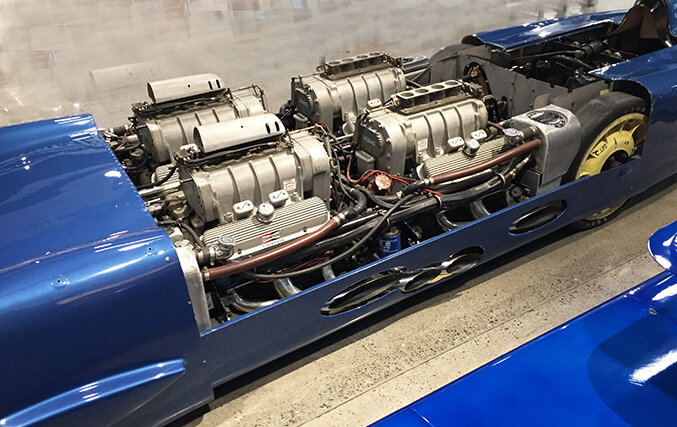

The Challenger I streamliner that he and Fritz Voigt designed earned Thompson nationwide interest as "America's Speed King" in 1959, when he threatened the 400-mph barrier, then international headlines in 1960 as "World's Fastest Man" at 406.60 mph. What his obits often omit is the contribution of a whole new vehicle category: the four-engined, four-wheel-drive racecar. His first one turned out to be the only fast one, but nothing burned rubber like the exhibition drag cars inspired by Challenger I. All four that were fully or nearly finished survive in some form, as does Mickey's 'liner.
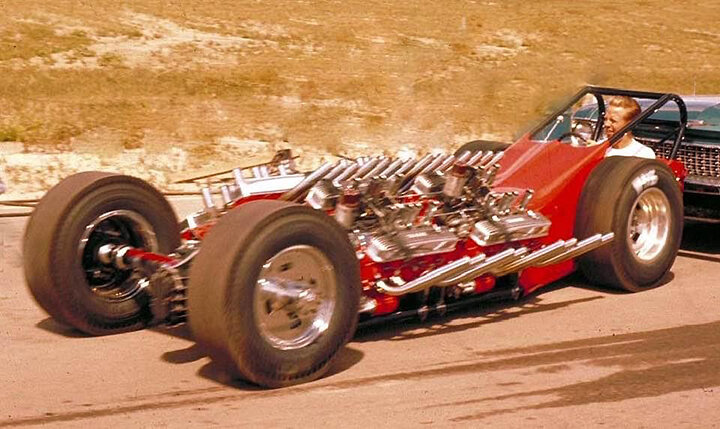


Tommy Ivo's came first. He was on tour in 1960 with his all-conquering, side-by-side-Buick twin while Mickey was chasing 400 mph with four Pontiac V8s. Drag fans were flocking to the first-ever west-to-east-coast pro tour, promoters were paying top dollar ($500), yet a radical replacement was already underway in Kent Fuller's San Fernando Valley chassis shop. Ivo had ruled out building a conventional, blown-Hemi fueler only because only outlaws burned nitro during NHRA's fuel ban, and he needed those NHRA strips. The only obvious alternative, supercharging his gas Buicks, was sure to shorten engine life and tour profit.
Tommy soon saw his way to turn over the driving chores to his painter Don Prudhomme. Photo Tommy Ivo collection
TV Tommy envisioned a third option sure to thrill crowds without unduly stressing his normally-aspirated Buicks—now doubled to four V8s, as Mickey Thompson himself had done after his own dual-Chrysler dragster topped out at 294.117 at Bonneville in 1958 (top time). NHRA, anxious for something "legal" to recapture fans lost to its gas-only edict, initially encouraged construction. That changed when all-powerful Wally Parks, simultaneously NHRA's president and Hot Rod's editor, saw Eric Rickman's buildup photos and freaked out, envisioning entire Top Eliminator fields of two-ton gas dragsters hurtling through guardrails and into farmers' fields; another unintended consequence of his unpopular decision to increase shutdown space by slowing down speeds (sound familiar?). Instead, the most-expensive dragster ever built would be relegated to exhibitions at sanctioned strips. Ivo's disappointment was offset by two silver linings: (1) Wally personally guaranteed that his would be the only vehicle permitted more than two engines; (2) the car turned out to be a real tank, more than twice the weight of the twin and a full second slower.
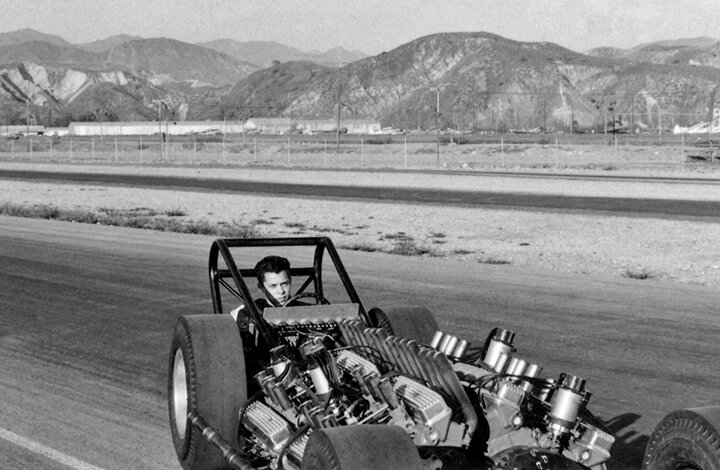
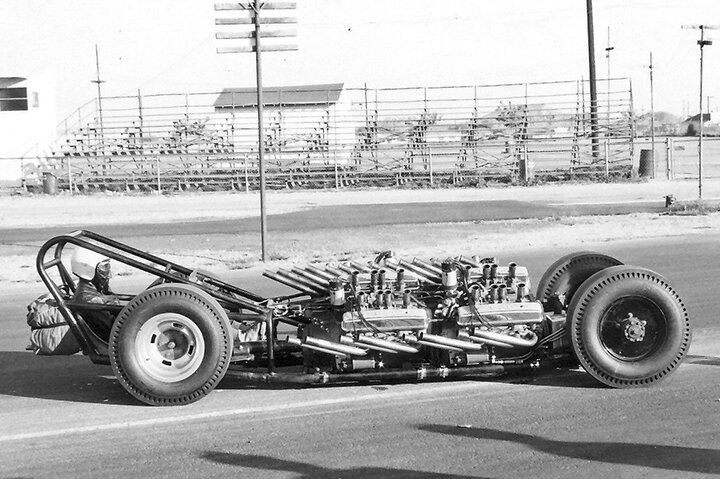
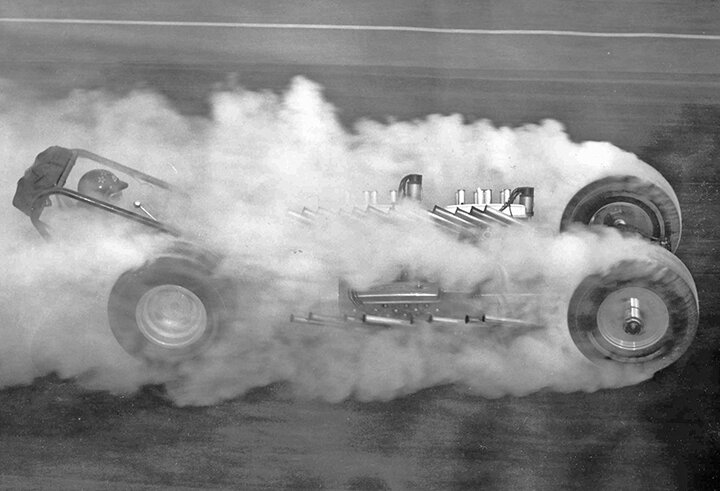
This elimination of competition helped Ivo and five subsequent owners keep a single racecar in business for more than two decades and 2000 passes. Ironically, Tommy himself made only about 14 runs, all at the very beginning and near the end of his creation's performing life. The rest were handled by Don Prudhomme, Ron Pellegrini, Tom McCourry, Jim Harwood, and Norm Day, respectively.
It was McCourry who cleverly revived a five-year-old act by capitalizing on the new Funny Car craze. With no class rules to satisfy, the only design requirement was keeping Buick Division happy and annually renewing the sponsorship deal that Ivo initially negotiated for a new Buick tow vehicle at the start of each season, plus nailhead parts as needed.
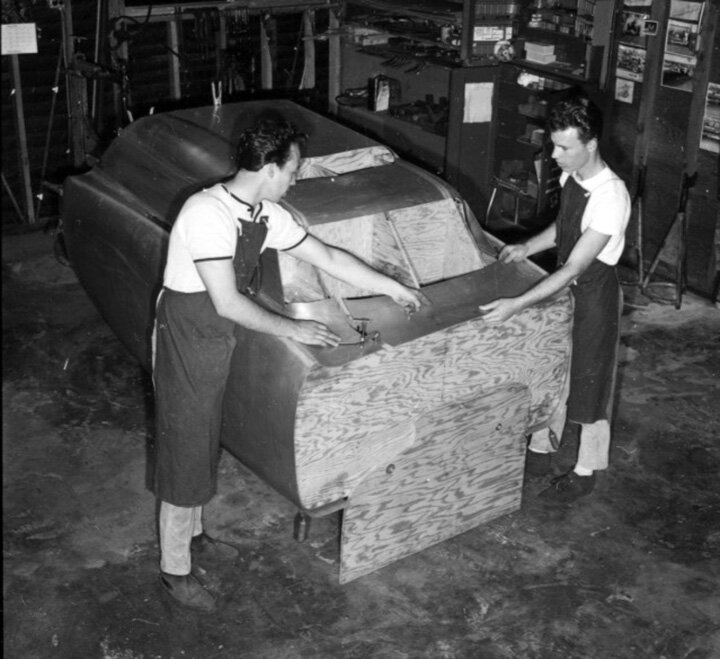
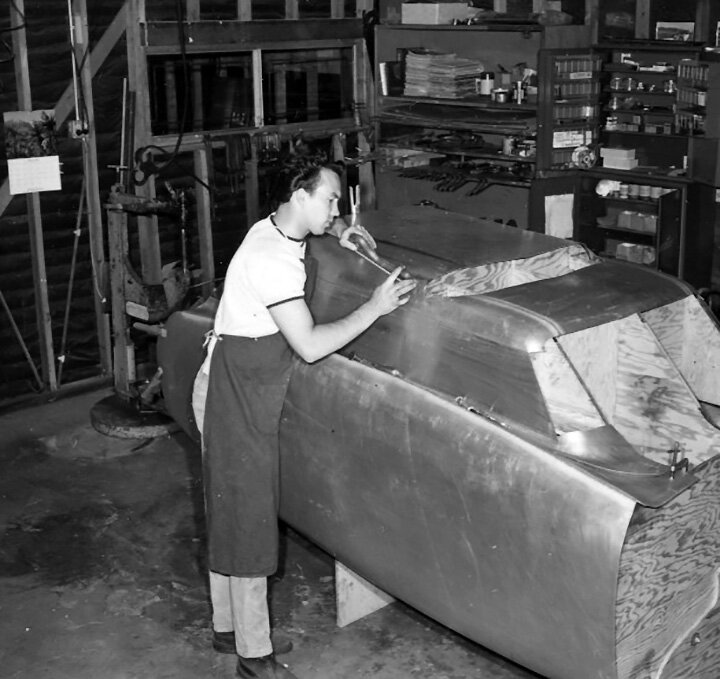
George Barris's proposed Wagon Master redesign combined the nose of a '66 Riviera with the cabin of a '66 Roadmaster station wagon (necessary to conceal Fuller's giant "skid bars"), using factory panels. McCourry argued against the weight of steel. George wouldn't budge. Tom took his dragster and George's drawings to master-tinbender Tom Hanna, got sued and temporarily restrained from touring by Barris (who reportedly got $5000 for doing nothing to a car that McCourry had bought for 10 grand).
First version of the Hanna-Sorrell-bodied ‘Wagon Master’ was pearl yellow. Photo Tommy Ivo collection
Nothing if not a show piece. Photo Tommy Ivo collection
Meanwhile, Ivo graduated to AA/Fuelers as the fuel ban fizzled, then nitro Funny Cars. He was touring jets by 1979, when he spotted his old trailer behind Glendale Speed Center, found the Wagon Master rotting inside, and reclaimed it for $20,000. Another 20 grand was spent rebuilding for a grueling, 60-date retirement tour across North America in 1982.
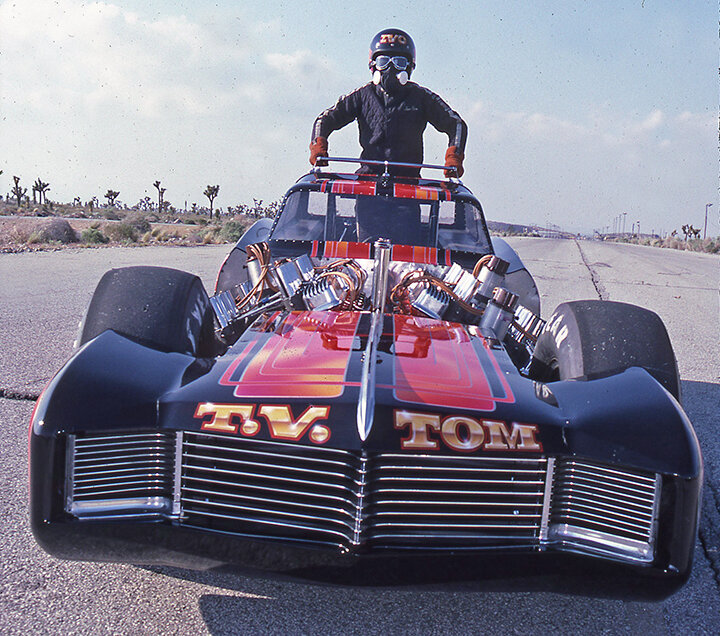

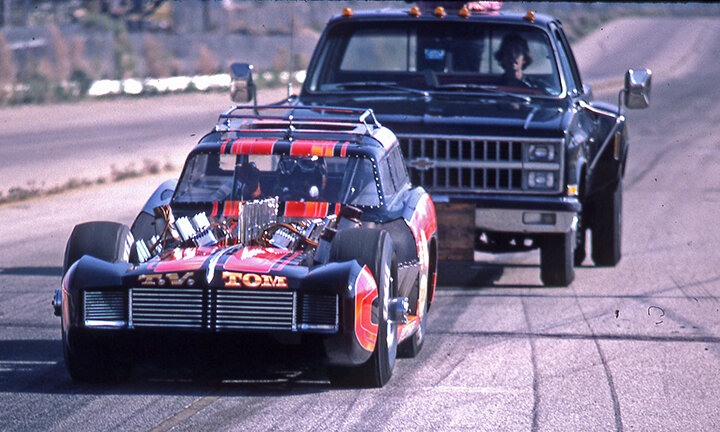
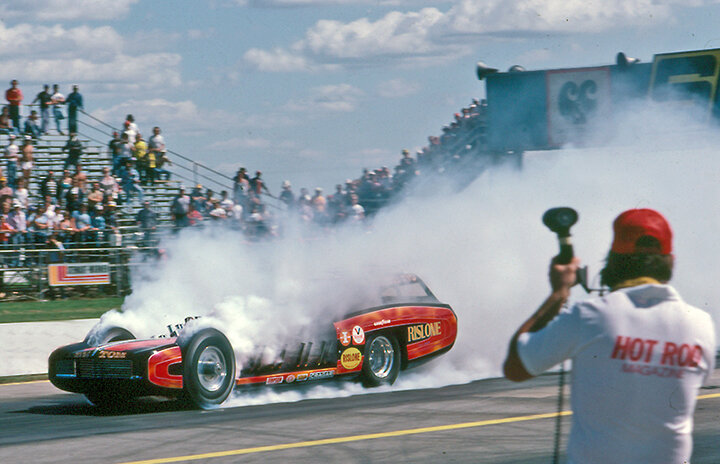
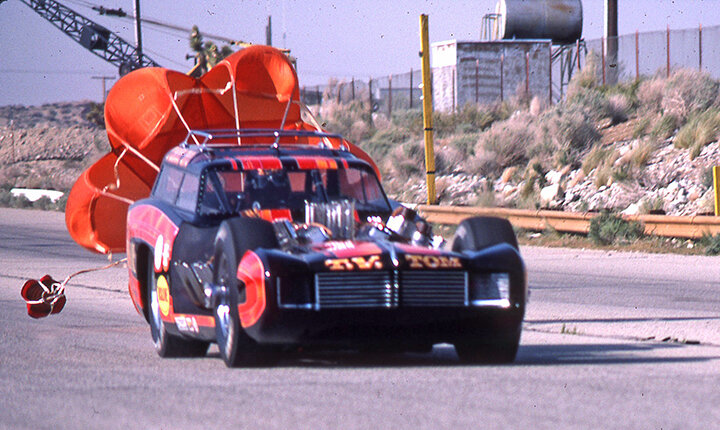
Afterwards, he sold the operation for the cost of his initial investment to Norm Day, who rarely ran before sending the antique abroad for an extended tour of car shows. When it returned from Europe, Norm lent the car to Tommy for the grand opening of the Wally Parks Motorsports Museum, where it would languish for more than a decade. Ivo, who visited so frequently that staffers anointed him "Mayor of the Museum," badly wanted it back, but Day insisted that his $40,000 investment had appreciated at least tenfold.

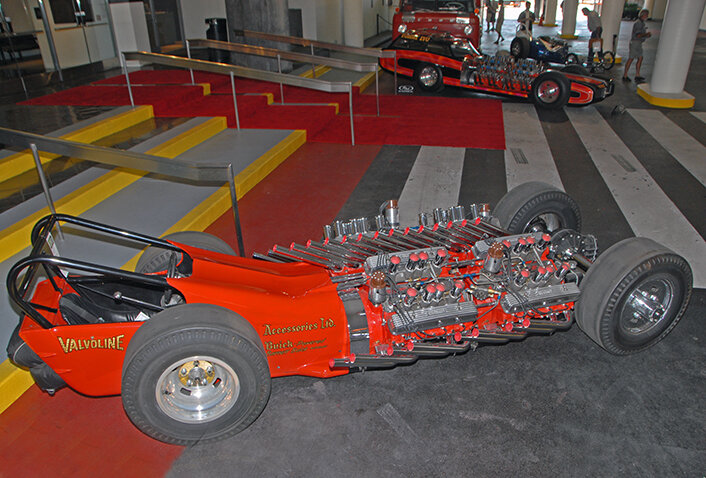
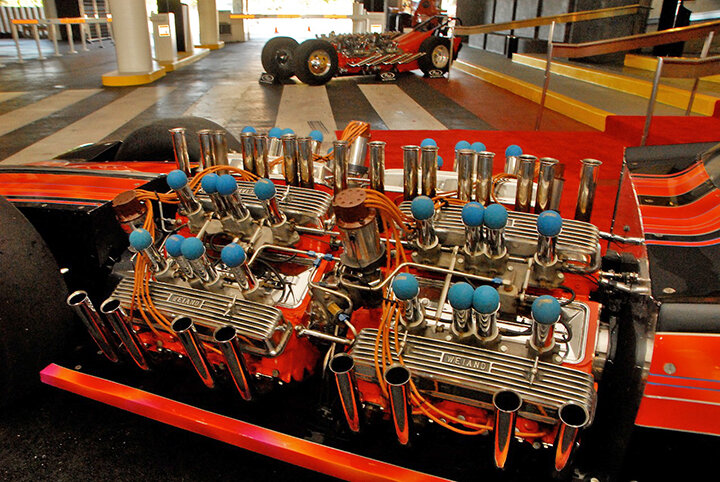
The original is the wagon, the faithful recreation ‘Showboat’ built by Bruce Dyda. Photos Dave Wallace
Ivo calculated that he and chassis-builder Rod Pepmuller could produce another Showboat far cheaper. They enjoyed full access to Norm's car for measuring and pattern making, and Ivo had kept the only irreplaceable component: one of six reverse-rotation quickchanges custom-made for 4WD Novi Indy cars. (While Ted Halibrand was filling Andy Granatelli's order for four units with ring gears on the opposite side of the pinions, he made two extra. Tommy grabbed them both in 1960. The other differential still serves the Wagon Master.)
‘TV’Tommy Ivo with three of his many rides. Photo Tommy Ivo collection
The two friends were a decade into cloning, about halfway done, when collector Ralph Whitworth handed Norm Day nearly half a million dollars, intending to convert the Funny Car back into the rail he'd seen on the box of a model kit. Alarmed at the prospect, Ivo offered to complete and sell Ralph the clone at his cost, thereby preserving both popular configurations in Ralph's Nevada museum, America's Car Collection. ("To my eye," Tommy later explained, "the Funny Car is McCourry; the dragster is Ivo.") Whitworth consented, on one condition: "It's got to be perfect." As insurance, he shipped the original to fabricator Bruce Dyda, who finished the repro alongside the real deal. The completed cars came together for one last time during Ralph's $7M, no-reserve auction at the Petersen Museum, where I photographed the pair in 2009. (Whitworth lost a ton on the original, which fetched just $180,000, including fees, but doubled the 80 grand paid Ivo for the repopped rail.)
Gary Weckesser’s Mach IV was powered by four 351s joined together by custom gear drives. Photos Tim Sutton
The last thing Kent Fuller wanted in 1969 was another four-motor project. Ivo's job had taken nearly a full year, destroyed a close business and personal relationship (since repaired!), and ended with the opening of Tommy Ivo Speed Specialties nearby. (In two years there, Ivo and Pepmuller pumped out a dozen slingshots that looked and ran just like Fuller's state-of-the-art fuelers.) That ordeal notwithstanding, Kent consented to build a 4WD Funny Car.

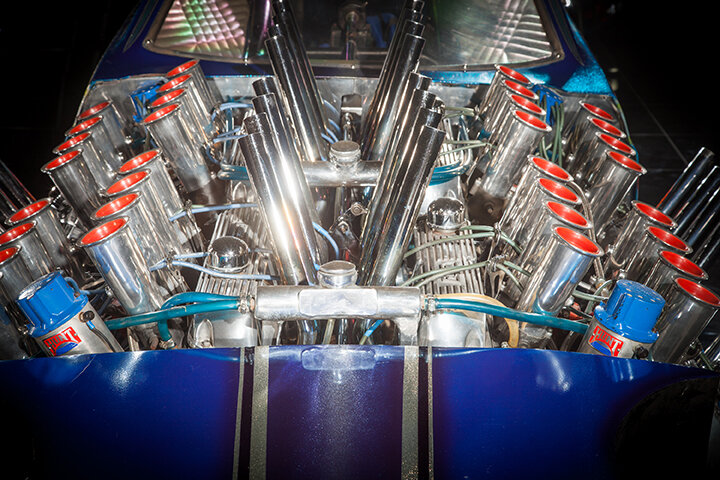
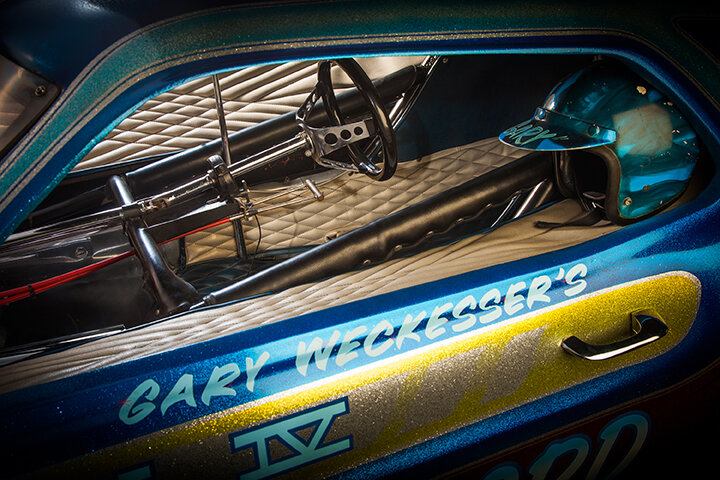
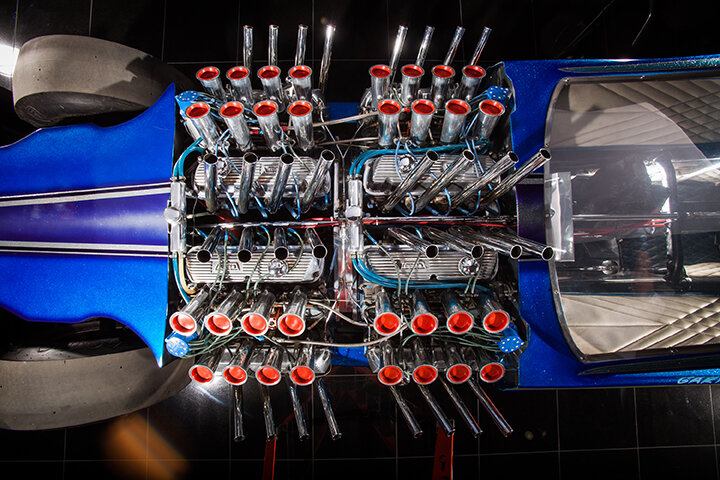
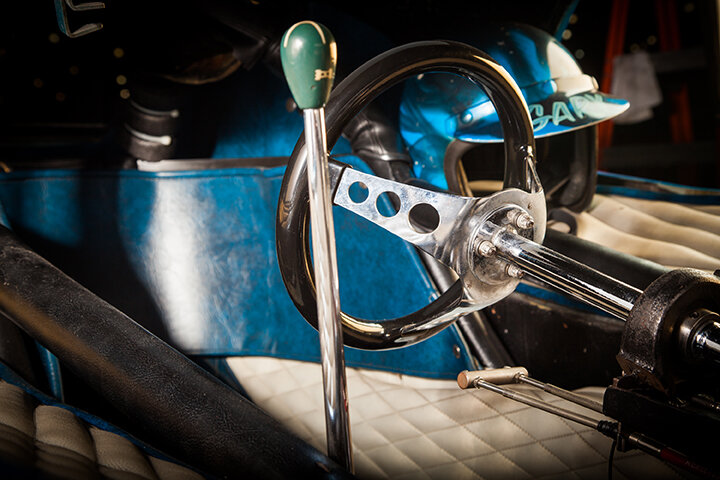

Unlike the Showboat/Wagon Master, whose front and rear axles were each assigned half the horsepower, both ends of the Mach IV were tied together by a single, four-disc clutch fed by what owner-driver Gary Weckesser called his V32 Ford (i.e., four 351s joined together by custom gear drives). Consequently, all four slicks spun equally ferociously—and too often uncontrollably, as evidenced by aftermath photos of the brand-new Mustang on the wrong side of (non-NHRA-affiliated) Great Lakes Dragway's guardrail.
Mach IV off-roading at Great Lakes Dragway in the 70s.
"It went down the track like a creeper," Ivo recalled, adding, "That thing crashed almost every time out!" Tommy credits dumb luck and weight transfer for hooking up the rear tires and keeping the Showboat/Wagon Master aimed straight, no matter how fast its front tires were spinning.
Jim Lytle’s ‘Quad Al’ had four Allison V-12 engines. This is a real car, not a model. Photos Dave Wallace collection
Last but not least outrageous is Quad Al, the whimsical brainchild/-fart of Jim Lytle (pronounced "Ly-till"). His previous homebuild was Big Al, an Allison-powered '34 Ford famous for being the fastest full-fendered car of its time (1964), and the first whose replacement body was one hunk of fiberglass. This unlikely project started out as a clean sheet of paper, literally, in buddy Ron Jolliffe's school notebook. Once Jim got a look, their conversation went something like this:
"Why not four engines, instead of two?"
"If Mickey Thompson can do it, why can't we?"
"Tommy Ivo has four engines. So should we!"
"Let's build a model."
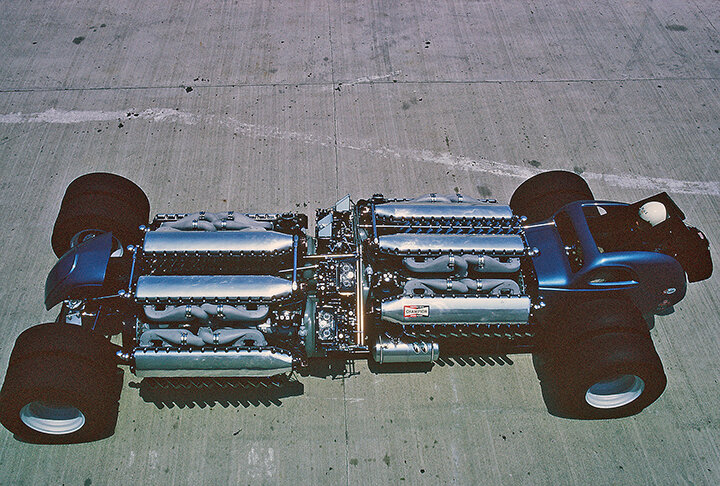
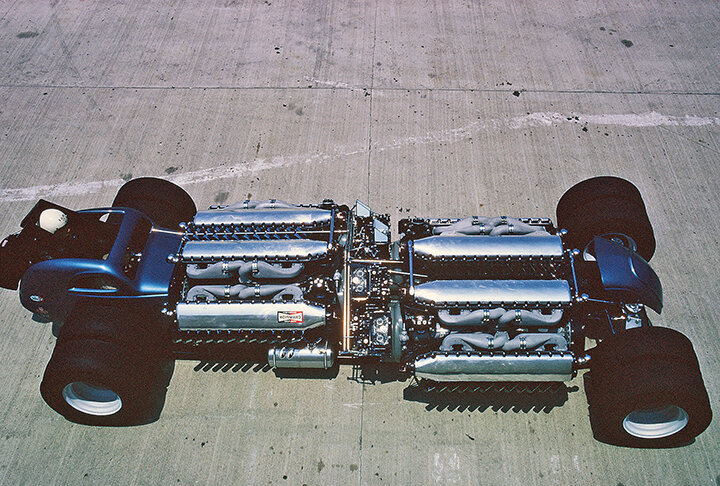
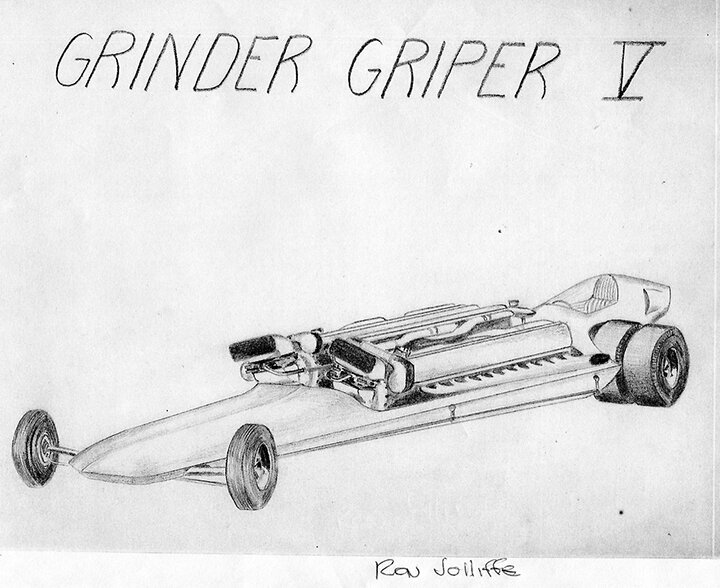

Lytle, whose L.A. draftsman job was paying $110 a week, went out and bought four plastic Allison V12 kits plus one Fiat competition coupe. Encouraged by the result and Jonesing another Allison project, Lytle rounded up four surplus engines and welded together a beefy boxed frame. The buddies lacked only custom differentials and clutches when a low quote of five grand stopped them cold. "I had $2000 in that whole car," Lytle told me for a 2006 DragRacingOnline.com article. "Motors were the easy part: In 1965, you could buy Allisons all day long for 50 to 150 bucks, and they made 3000 horsepower apiece, unmodified!" He lost track of Quad Al after the widow of murdered second-owner Tex Collins separated and sold off the pieces. Jim lived long enough ('til 2011) to hear from an Indiana fan of his who'd acquired the frame and body and vowed to complete the car in Lylte's honor.
In 1970, the two foursomes got together for a match race at Fremont. Photo Dave Wallace collection
This whole crazy idea of instantly quadrupling horsepower owes everything to Mickey Thompson who accepted no replacement for displacement; Mickey was the visionary who proved that if two engines are good, twice as many have gotta be twice as nice. While true that none of Challenger I's drag-strip descendants set records for anything but wasting rubber, all four of these drag cars continue to fascinate gearheads, half a century past the heavyweight genre's prime. Whereas old records set by state-of-the-art machinery get broken and forgotten, old, slow cars with four engines never go out of style.
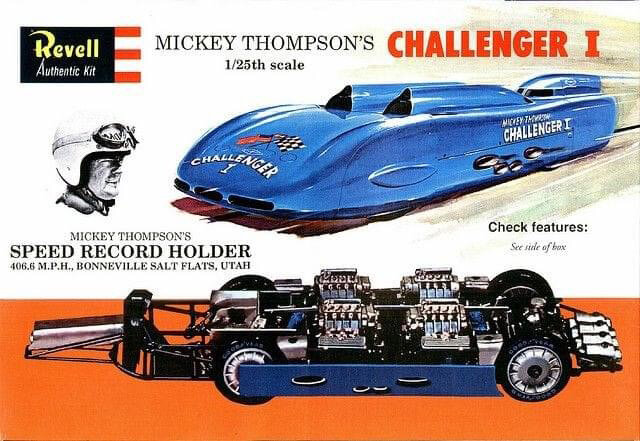

Collectibles include model kits, record albums, posters, magazine covers, ads, etc.










